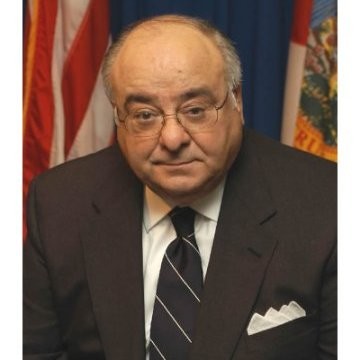
Title: Crime Scene Investigation and Management
Plenary Speaker
Prof. Anthony Schembri
Former Police Commissioner in New York, United States
Abstract
This will be a presentation of real crime scenes and the management of efforts bringing together the forensic experts and the investigative personal to solve real cases. Having lead the Homicide Department department unlike CSI and other programs, police fail to collect and properly analysis a crime scene which I will demonstrate. We need to interpret crime scenes. Sloppy police investigations, lazy forensic personnel team up to reduce the ability to solve cases with solid evidence.
Biography
Anthony Schembri is a respected law enforcement and academic professional with over four decades’ experience in the field. Over the years, he has drawn praise from such varied sources as New York City Mayor, President Jimmy Carter, Florida Governor Jeb Bush, and New York Governor Mario Cuomo. First appointed to the Brooklyn District Attorneys Office he advanced to Deputy Chief of the Narcotics Bureau, then to Director of Training at the District Attorneys Police Academy. Anthony Schembri has served as the city’s Deputy Inspector General, investigating cases of major crime and corruption. He was appointed by the Mayor of New York as Corrections Commissioner, a position putting him in charge of 12,000 uniformed officers and 20,000 inmates at 19 separate jail facilities. Today, the Citrus County, Florida, resident serves as a Visiting Professor at Oxford and Sheffield Hallam University and named Outstanding Professor of the Year at the University of Florida.
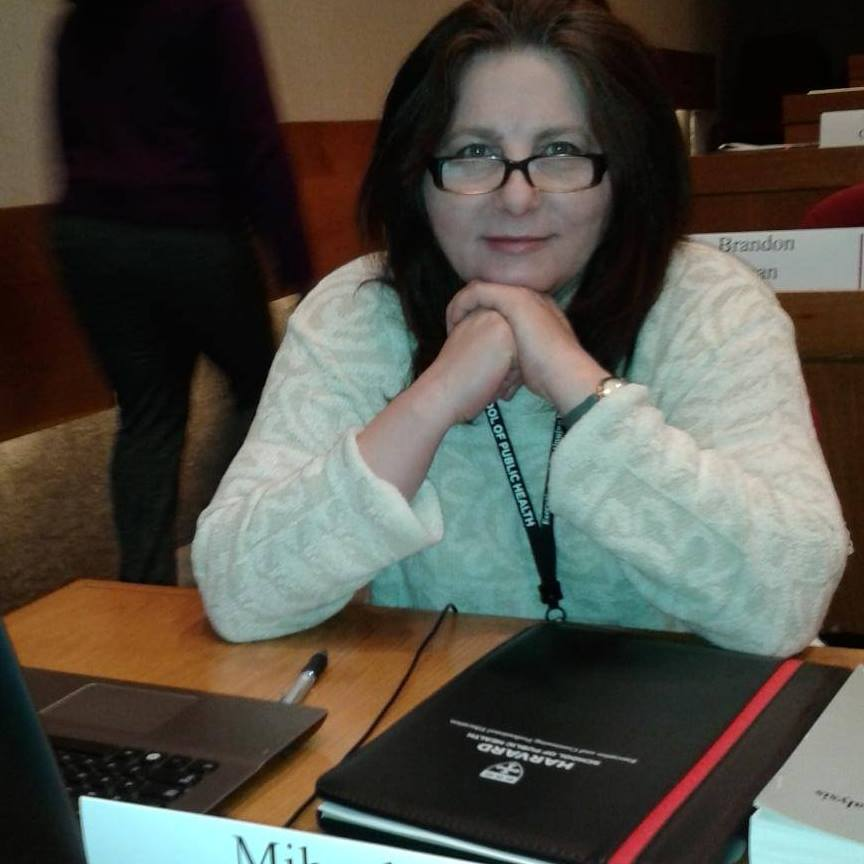
Title: THE IMPORTANCE OF ANALYSING THE SUICIDE NOTE IN AN EQUIVOCAL DEATH INVESTIGATION
Keynote Speaker
Ms. Mihaela Brooks and Dr. Artin Sarchizian
Societatea Romana de Stiinte Criminale, Canada
Abstract
The investigative process of a suspicious death consists of strategies for classifying a manner of death by informed opinions as either homicide, suicide, or accident. The Romanian authorities' equivocal death investigation of the Romanian pop singer Madalina Manole is an illustrative example of ineptitude in determining if her demise was a homicide, homicide simulated as suicide, or suicide. The authorities maintained the initial hypothesis of suicide invoked by her husband and the presence of an electronic suicide note (SMS sent to herself) recorded on the day of her death and a subsequent written "sentimental testament." Neither the SMS nor the "sentimental testament" were analyzed as part of the psychological autopsy. This presentation is an approach to correlating the linguistics of those written and electronic suicide notes to her personality, behavior, and relationships as a helpful methodology for determining the authorship of the suicide notes.
Biography
Ms. Mihaela Brooks Criminal InvestigativeAnalyst Criminal Intelligence Analyst Geographic Profiler GPA I CertifiedAnti-TerrorismSpecialist

Title: From Pathology to Person: Transforming the “Story” of Death Row Inmate
Keynote Speaker
Dr. Marian Swindell
Mississippi State University, United States
Abstract
One of the most effective ways to mitigate a capital murder sentence is to tell the life story of the client in such a way that judge and/or jury are emotionally moved, seeing him/her less as a diseased sickness on society, but more as a dejected human struggling to survive with underdeveloped or non-existing coping skills.
The purpose of this presentation is to discuss ethical and culturally competent ways to gather and document client informationusing certain skill sets, assessments, and techniqueswhich ultimately assist in sentence mitigation. A well-educated, well-trained, ethical mitigation specialist will literally and figurative hand over lifesaving information to the defense team. After weeks or months of meeting with the client and unpacking every bio-psycho-social-spiritual-eco-environment adverse event they experienced, the hard work then begins. The specialist then spends weeks writing the findings analysis and implicationof analysis for defense council. This bio-psycho-social-spiritual-eco-enviro history must be so well-written that council can vividly picture themselves experiencing the abuse, the domestic violence, the community violence, the abject poverty, that utter depravity in which the client survived. A “painting” so well-written that the only thing left for defense council is to skillfully and charismatically share the story and indicate that the adverse childhood trauma impacted the adult criminal behaviors, which points to mitigating circumstances.
A well-written and well-told story is an effective sentence-mitigation strategy and is paramount to securing a lesser sentence.
Biography
Dr. Marian Swindell was invited by the US Administrative Office of the Courts to speak at a training event for federal public defenders and private attorneys on the effects of family and community violence on brain development and architecture. She also independently contracts as aMitigation and SME in family and community violence/dysfunction, child emotional, physical, mental, and sexual abuse, addiction as they relate to brain development. Dr. Swindell a professor of Social Work at Mississippi State University and recently made history as the first teaching PhD in Social Work and MSW to be awarded tenure and achieve the rank of professor at Mississippi State University. She has over 30 years in forensic social work and brings a wealth of information from sociology, social work, and forensic testimony evidence retrieval to this conference. Dr. Swindell completed her Ph.D. (2001) and MSW (1992) in Social Work from the University of Alabama.

Title: Vicarious Trauma and the CSI: A Minimally Documented, yet Age-Old Phenomenon
Invited Speaker
Dr. Leggie L. Boone
Generation ForSciTe, LLC and Keiser University, United States
Abstract
Law enforcement agencies are frequently studied for officer wellness, yet research is limited in the application of tools for the psychological wellness of crime scene investigators exposed to tragic scenes. Momentum for the awareness of vicarious trauma within responders to tragedies is gaining traction for the support of awareness, prevention and intervention for employees and practitioners beyond the first responders. Aside from the therapist’s office, vicarious trauma was unheard of for years, yet experienced within varying fields where concern and emotion are lead actors. The goal of this presentation is to delve into the significance of vicarious traumatization and to project the operational needs for critical incident stress management protocol for the inclusion of the CSI and personnel frequently exposed to trauma. A review of studies and practices will be shared to enhance understanding of the psychological impacts of indirect trauma and the organizational responsibility for employees, beyond performance effectiveness. Implications for positive social change include recommendations to policymakers to increase resources to labs and law enforcement agencies for the wellness of crime scene investigators and forensic personnel; and the establishment of a critical incident protocol that, if provided as a preventive measure, could impact public safety and perceptions of organizational support. Vicarious traumatization is a substantive possibility that education, training, application, and time could minimize.
Biography
Dr. Leggie Boone is a Forensic Analyst in Florida, an educator at Keiser University, and president of Generation ForSciTe, a conglomeration of Forensic Science and Technology subject areas providing consultant services and research assistance. Dr. Boone completed her PhD from the Public Policy and Administration in Criminal Justice program through Walden University. She has worked in forensic science since 1993, as a forensic services practitioner and an educator in Maryland and Florida. She has also contributed to multiple publications, including So You Want to Be a CSI, a forensic textbook, and The Dead and the Bizarre, and has presented in international conferences on the topics of vicarious trauma, coping strategies, and fingerprints.
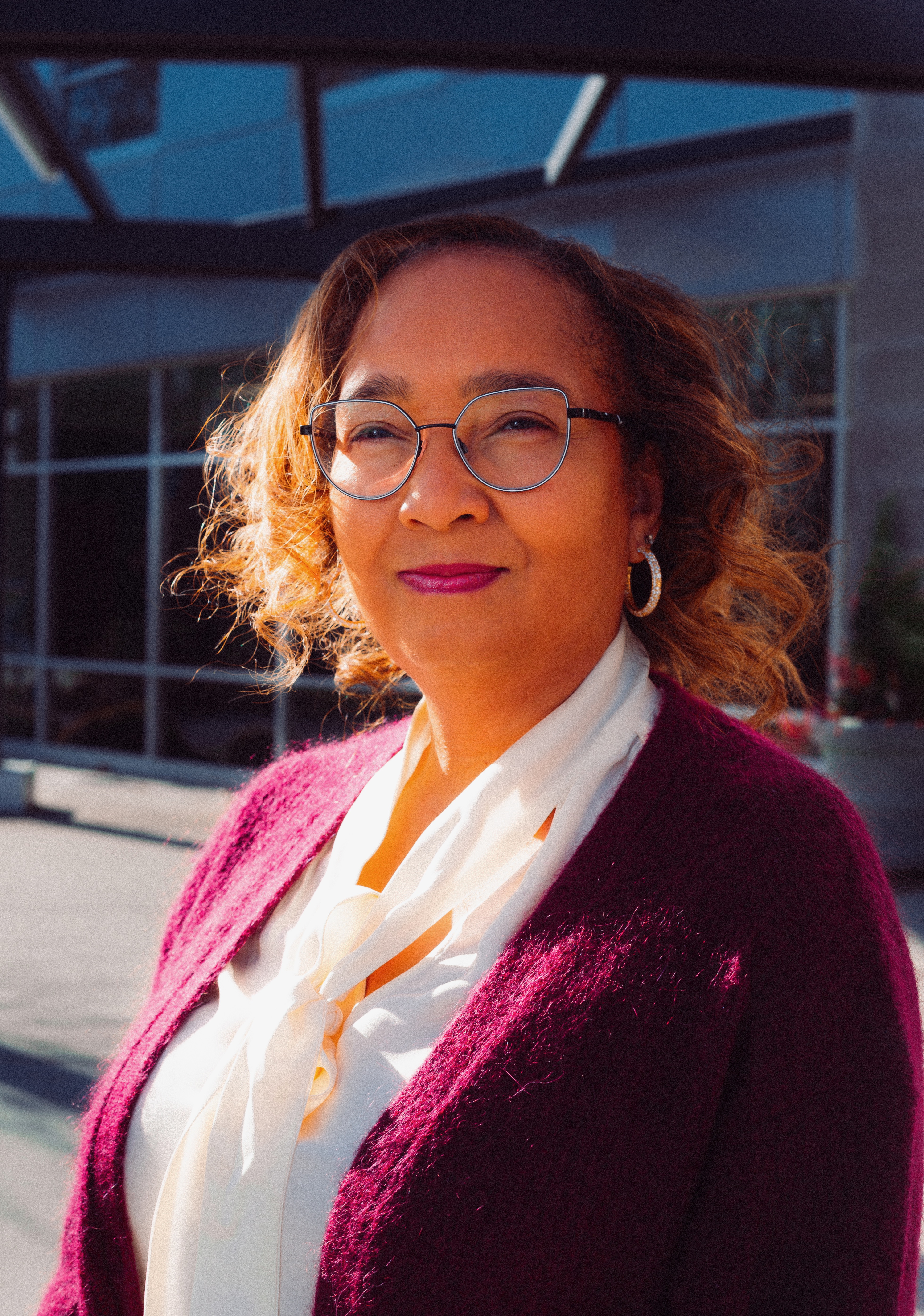
Title: PERCEPTIONS OF UNIVERSITY LAW ENFORCEMENT OFFICIALS’ REGARDING UNSUBMITTED, UNTESTED SEXUAL ASSAULT KITS (SAKS)
Oral Presentation
Dr. Darlene Brothers-Gray
Coppin State University, United States
Abstract
The purpose of the qualitative research study was to examine the perceptions of university law enforcement officials on unsubmitted and untested sexual assault kits (SAKs). Sexual assault nurse examiners use SAKs to collect evidence from sexual assault victims and pass them to law enforcement officials; however, many SAKS remain unsubmitted and untested once in police custody. Without such evidence, law enforcement officials cannot apprehend perpetrators of sexual assault. Sexual assault is a problem worldwide, including on university campuses where there are higher rates of sexual assault than in the general population. The generic qualitative inquiry study was the means of exploring why many officials do not test SAKs in police custody and to assess the perceptions of 10 university police officers in 2 Middle Atlantic university policedepartments regarding unsubmitted and untested SAKs. Semi structuredinterviews, conducted in person, digitallyrecorded, andtranscribed, elicited theexperiencesof the lawenforcementofficers.Followingtheinterviews,thematicanalysis(i.e.,inductiveanalysis)wastheapproachusedtoanalyzethedata,fromwhich4 thematiccategoriesemerged:(a)finances, (b) resources, (c) manpower, and(d) reoccurrence.The research shows that the provision of resources, finances, and manpower is necessary to reduce single and reoccurring sexual assault crimes and to promote the proper functions of the criminal justice system, collective engagement of members of society, and equal value of its citizens, regardless of gender. The study indicated the need for stakeholders to collectively engage, acknowledge the systemic gaps, and provide resolution so that officials properly utilize SAKs to apprehend offenders and empower victims to live healthy and functional lives.
Biography
Darlene Brothers-Gray, recently received a book offer on her research on untested sexual assault kits title“The Phenomenon of Untested Sexual Assault Kits” published by Cambridge Scholars Publishing. https://www.cambridgescholars.com/product/978-1-5275-7330-7.Dr. Brothers-Gray earned her PhD in Criminal Justice from Capella University in 2020, an MS in Forensic DNA and Serology from the University of Florida, and an MS in Forensic Investigations from National University. She is currently an Assistant Professor for the undergraduate Forensic Investigation Certificate in the Department of Criminal Justice at Coppin State University.

Title: The Intersection of Forensic DNA Processing and Fingerprint Analysis
Oral Presentation
Prof. Erik Hall
Saint Louis University, United States
Abstract
Fingerprints have long been used as a tool for detectives and investigators in attempting to determine who may have been at the crime scene. DNA has more recently become a favored technique of those in law enforcement. Many times items submitted to the laboratory for analysis request both fingerprints and DNA processing. During this talk we will review some of the principles of DNA and fingerprints as well as update the audience on current terminology and techniques used in the field of forensic science. Special attention will be given to the importance of communication between examiners, the different techniques used to collect DNA and process evidence for fingerprints, and the ability of these two units to work in unison with each other to effectively process evidence. Case studies will be discussed to highlight the importance of proper training and consultation between fingerprint examiners and DNA analysts. After the talk, participants will be able to confidently use current terminology, understand the importance of these two fields of forensic science working together, and feel more confident in the methods being used in the laboratory and the field.
Biography
Erik Hall is the Director of the Forensic Science Program at Saint Louis University in St Louis, Missouri. He previously worked at the St Louis Police Department Crime Laboratory as the Biology Technical Leader where he performed casework in DNA analysis, Biological Screeing, and Bloodstain Pattern Analysis. Mr. Hall completed his graduate studies at the University of New Haven at the Henry Lee Institute of Forensic Science. In addition, Erik is the founder and principal consultant at Hall Forensic Consulting where he strives to assist lawyers, law enforcement, and forensic scientists in the latest forensic science techniques.

Title: Doing Qualitative Research
Keynote Speaker
Dr. Aviva Twersky Glasner
United States
Abstract
Qualitative research is often pushed aside for quantitative data analysis. Doing qualitative
research is more intensive and requires a different set of skills,e.g. listening and watching. Using examples of ethnographic research, I will present a methodology for learning about the antecedents of criminal behavior. While qualitative research can not be generalized, it is very useful to gain understanding and knowledge about diverse perspectives and populations.
Biography
Dr. Aviva Twersky Glasner, Ph.D. received a Masters in Forensic Psychology and her doctorate degree in Criminal Justice. She has worked with Deaf individuals and developed her research interests around using criminological theories to examine the role that socialization may play in the criminality of Deaf inmates.

Title: The Use of Virtual and Augmented Reality in Forensic Investigation Studies in Higher Education to Supplement Learning for Distance Learners
Oral Presentation
Rach Strzelecki
Arden University, United Kingdom
Abstract
There are several benefits to using virtual reality and augmented reality within education. Andrew (2021) conducted a neuroscience study to look at the effect that AR has on the brain. The study showed the following three main ways that augmented reality affects the brain. Firstly, AR drives high levels of visual attention in the brain, almost double that of non-AR related tasks. Secondly, AR elicits a ‘surprise’ response in the brain and finally what is stored or encoded into memory is 70% higher for AR experiences(Andrews, 2021. How augmented reality affects the brain)
Smith (2021) also noted that AR and VR technology allowed for fast and effective transfer of information for students and can bring an alternative and interactive learning experience. According to EdTech and the American University School of Education (2021), a mixed reality, both VR and AR, improved the student outcomes in a biology classroom. It improved the memory, retention, and recall ability whilst VR alone only improved the retention. Smith (2021) also noted that the use of VR and AR enhances engagement with study. The technology can also enhance the understanding of complex topics and improve retention in study programmes.
At Arden University, these principles are being put into practice within the BSc (Hons) Forensic and Criminal Investigation undergraduate programme with the immersive virtual and augmented reality crime world. Students will use this VR and AR to supplement their online learning with a host of formative tasks relating to forensic investigation. These tasks will be recorded and collated as their summative assessment. With greater interaction and immersive learning, students should remain engaged in their studies for longer and achieve higher grades within their modules.
Biography
Rach Strzelecki started her career as a Crime and Intelligence Analyst for Cleveland Police, working on several major investigations including human trafficking, vulnerable missing persons, drugs, and suspicious deaths. In 2006, she started guest lecturing for Teesside University in crime analytics, intelligence, and forensic investigation before securing a permanent role as a lecturer in policing. Rach has also worked at University of Wolverhampton, Interactive Pro and more recently Buckinghamshire College Group as an advanced practitioner leading on protective services and forensic and criminal investigation programmes. Her research has predominantly related to sexual offences and paedophilia however her publications have been within the field of terrorism, police and forensic investigations and online teaching and learning.
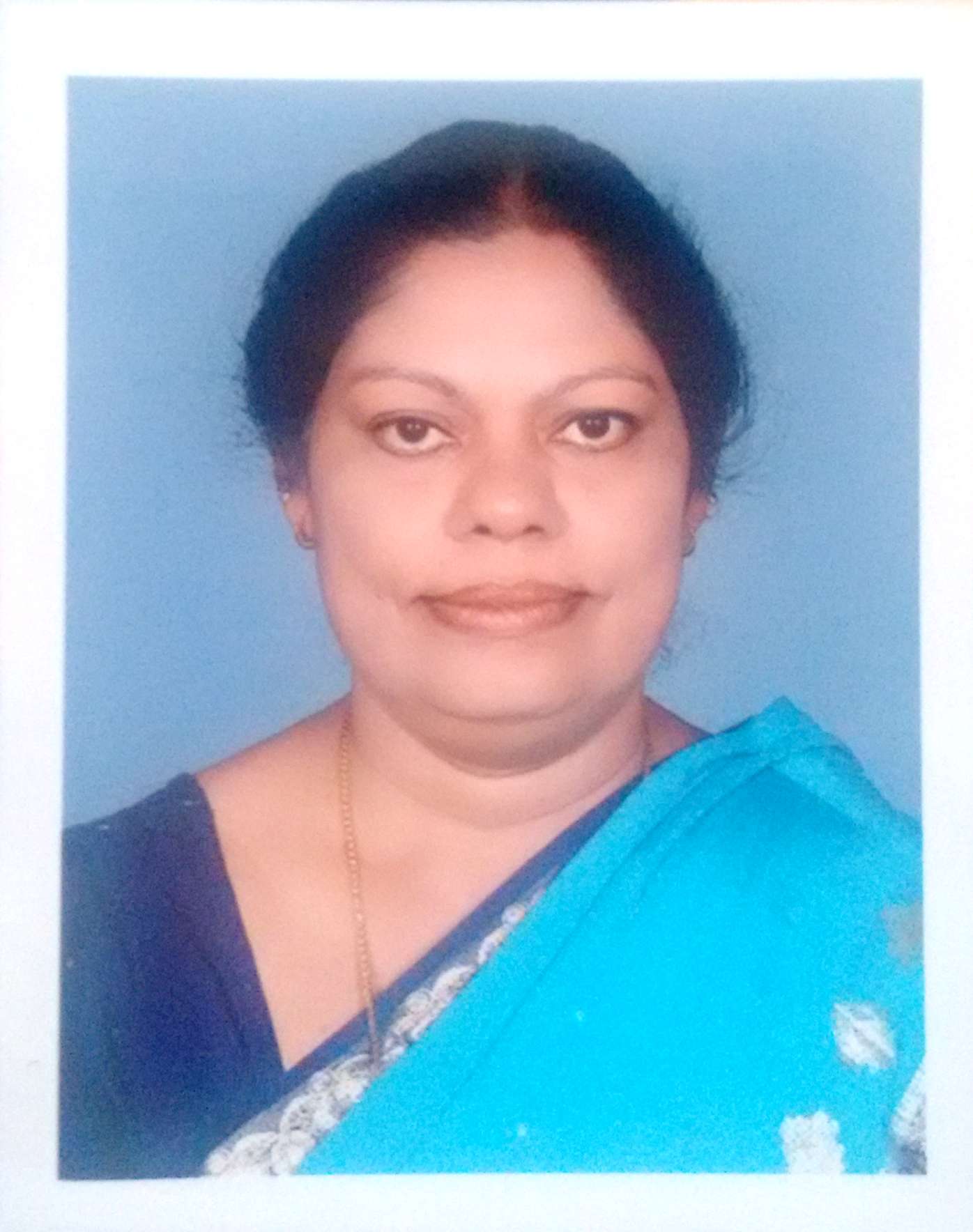
Title: Enhance Scientific Investigation: Exclude wrongful conviction
Oral Presentation
Mrs. Annamma John
Kerala Police Academy, India
Abstract
Advancements in Science and technology provides new ideas to wrongdoers to commit crime and escape from the clutches of law. The efforts of scientific investigators to stay one step ahead of those who actively choose to violate the law are part of an ongoing evolutionary process. Their efforts aid police investigators in identifying suspects and victims of crimes, clearing innocent persons of suspicion and ultimately bringing the wrongdoers to justice. Scientific investigators have a duty to do their best for the criminal justice system and strengthen forensic science. This should be done by providing maximum possible evidence to the court. Scientific interrogation is the best method in interrogating a suspect to crack the crime. For this well experienced crime scene investigators should work hard to provide crime scene clues by which, even the hard core criminals yield and confess to the crime. This can lead to recovery of additional evidence to reinforce the link between the suspect with the crime scene and the victim. The entire law enforcement fraternity including the prosecutors, defense attorneys, as well as members of the jury must be familiar with investigative procedures and the scientific theory that support their own activities. Over emphasizing a single expert’s opinion coupled with the absence of suspect’s confession may very often lead to wrongful convictions. This is detrimental to the entire work of the judiciary. This can even undermine the role of forensic science as a “junk” science before the public. It is the duty of every crime scene expert to strengthen forensic science by providing maximum evidence. So enhance scientific investigation to ensure justice and exclude wrongful conviction.
Biography
Smt. Annamma John is a professional Forensic Scientist and a consultant with 30 plus years of experience. She began her Forensic career with Kerala police Forensic Science Laboratory in 1990. During her Forensic tenure she practiced evidence analysis as well as Scene of Crime investigations. She has a professional approach to solve crime scene problems and has so many successful investigations to her credit. She has testified as an expert witness for hundreds of cases including Homicide, Arson, Explosion, Firearm, Toxicology, Hit &Run and Sexual assault cases. She has a proven track record of a professional trainer and worked in Kerala Police Academy for 7 years as Senior Instructor and Head of the Department of Forensic Science. She has also been a faculty of the MSc Forensic science Programme conducted by the Centre for Integrated studies, Cochin University of Science and Technology. As an eminent resource person of Kerala Police Academy having a strong background in Crime Scene Investigation with continuous skill upgradation, her expertise is being sought after by sleuths from CBI, NIA, and other Law enforcement agencies. She is the Chief patron of Indian Criminology and Forensic Science Association and also holds responsible position in Board of studies of various Universities and Autonomous colleges. She has authored one of the best- selling books in forensic science - “Advanced Technology in FORENSIC INVESTIGATION” in which she tries to merge theory into practice with experience based case studies. Presently, she is working with Cooper Surgical in Houston, USA.
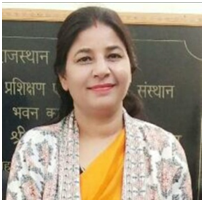
Title: Scenario of Crimes related to Poisons and effects of Forensic Results on Conviction of Crimes in Courts: A Critical View on Low Conviction Rate
Keynote Speaker
Dr. Rakhi Khanna
Additional Director& Head, RFSL, Kota, Rajasthan, India
Abstract
In Forensic Science laboratories samples of viscera and body fluids as e.g., Blood and Urine are often sent for chemical analysis of poisonous substances. Analytical methods for examination of poisons include extraction methodologies, separation techniques, identification tests, qualitative and quantitative examination of specific groups and compounds. Viscera material comprises of Pieces of Liver, Spleen, Kidney, Heart, Lungs, Brain etc., a complicated mixture and it becomes very tedious to get all the information about foreign poisonous compounds because after ingestion of poison the body system works such that to nullifies the effect of toxicants. In this process most of the time the introduced material changes it form and chemical entity. The formed compounds or metabolites may be more poisonous or may be less toxic in comparison to parent compounds.
There are many techniques utilized for extracting the desired molecules and many identification techniques viz., UV- Visible Spectrometry, GC-MS, LC-MS, HPLC, HPTLC, Ion Chromatography, Randox Techniques are available. Besides performing high grade tests for confirmation of poisonous substances it becomes still difficult to correlate the findings with manner of poisoning. It is very complicated to differentiate between mode of death suicide and murder. There are many reasons associated with low conviction rate of culprits associated with the crime.
The most important reason of low conviction rate of crime which involves toxicant is 1) the major question asked in court is how the poison was introduced in the body. Most of the time the culprit caught free because of benefit of doubt. 2) It was asked again and again for the presence of smell of poison which may not be noticed by the medical jurist at the time of hospitalization, 3) many times family members hide the story to save them from other questions relating their repute or due because they don’t want it to publicize and to avoid critics, 4) sometimes honor killing matters are there which doesn’t come forward in fear of life threat. 5) The major reason is also that it is very easy to convert a murder into suicide taking the story of stress and madness in ground, imposing character related comments in case of girls and women’s. 6) The major reason is limitations in analytical reports about quantitative estimation of poisons in viscera. 7) The other major reason also lies in wrong interpretation of results and the difficulties in understanding scientific terminologies of reports sent by forensic scientists. Facts are not put in light of case. 8) There is still big gap between police officers, medical jurists, prosecution and judiciary. Many cases will be discussed to throw light on this issue.
Hence we can say that establishing role of culprit with poisoning cases is still a big challenge for high conviction rate.
There is lot more requirements of coordination and understanding among various disciplines of investigation and changes in analytical protocols.
Biography
Dr. Rakhi Khanna is presently the Deputy Director Training at State Forensic Science Laboratory, Jaipur, Rajasthan, India. As Head of Toxicology section, Analyzed more than 10 thousand cases. Manage Analysis and Reporting of Poisoning cases, Produce Reports in time, Give evidence in court, Adoption of new innovative techniques of analysis according to specific cases. Performed Research work in many cases. President of Internal Complaint committee of Prevention, Prohibition and Redressal Act against sexual harassment of women at workplace, 2013. Has wide experience of analytical and administrative work as DDO, Building construction of new building, Development of new Laboratory and Toxicology Division at Ajmer, Attend conferences, sending papers in conferences, taking invited lectures. Working experience of 22 years as Forensic Scientist cum Toxicologist from 1998 and have experience of analyses of large number of cases. approx. 20,000 cases and 60000 exhibits are reported.
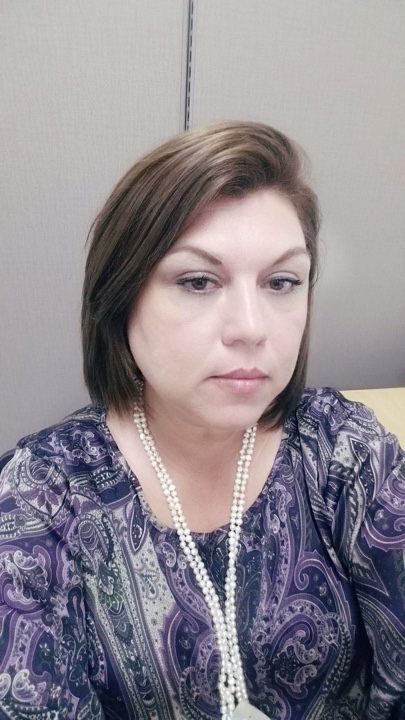
Title: What is Graphotherapy? and what is it for?
Oral Presentation
Mrs. Zaida M Guajardo
Aprendamos Juntos, United States
Abstract
I will begin by explaining the term Graphology, this is the study of handwriting analysis, it analyzes the strokes, shapes, size, and direction of the text, this technique is becoming more and more accepted by the Justice System an Associations, Businesses and for personal use, also as well as a reliable source to assess people in many dierent ways and circumstances from where they would perform best in the workplace to a criminological analysis in a Court of Justice, it is also an eective and reliable system. This analysis reveals the personality, behavior, feelings, and how an individual is shown to others and also to himself in privacy, emotions, also possible physical and mental illnesses Since it is based on scientific studies, this analysis is very reliable. It has been practiced for more than 3000 years ago in China, but modern graphology dates back to 1870 when Abbe Michon led a group of researchers in a study that formed the foundations of Modern Graphology over a period of 30 long years. The purpose of graphology is to better understand our reactions to certain events whether positive or negative circumstances. This analysis helps us understand why we react the way we do and we can change or modify our reactions accordingly. By understanding our strengths and skills, we can also choose the right career for us, This also as well as is used by the FBI to gain a deeper understanding of criminal personalities, temperaments, emotions, and how the criminals felt at the time of the crime, and afterward, this also to help young people get to know each other in better, focus on their school and home with family and friends, in society, In small children the drawings are analyzed, they show the subconscious of the child as a bridge of communication and expression, as well as writing in adults and endless resources that help us. Graphotherapy is based on scriptural-specific exercises directed by the Graphotherapist, and this sends the order to the subconscious and their behaviors, reactions as well as personalities being modified. To do this therapy, the Graphologist makes a scriptural analysis of the person on which this therapy will be based, and thus the behaviors and reactions of the individual will be modified.
Biography
Bachelor in Criminal Justice Forensic Investigator, National University College, Master in Criminal Profiler and Emotional Intelligence, Escuela Internacional de Criminologia y Criminalistica, Forensic Handwriting Analysis and Grafoscopy Mexican College of Graphology and Criminalistics Body language expertise. CEO Centro Grafológico ZG,Mexico USA, Aprendamos Juntos Non-profit organization for low-income children. Brownsville Texas USA
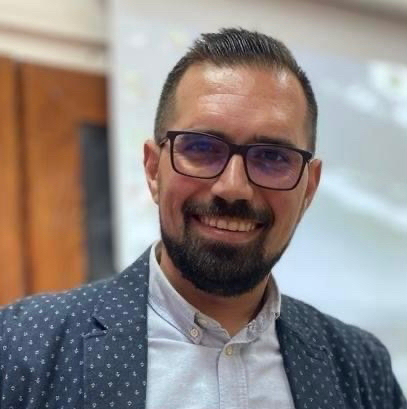
Title: Chemical Methods For Revealing Latent Fingerprints On Wooden Surfaces And In Their Mass
Oral Presentation
Mr. Andrei Ceobanu
Police, Romania
Abstract
Fingerprints are used since 19th century by Police forces to identify criminals and murderers. In 20th century the evolution of science contributed to develop forensic methods for revealing latent fingerprints. One of the most used chemical method for revealing latent fingerprints on documents and paper objects is made by using Ninhydrin. This substance has great results but is affectingthe characteristics of ink or other scriptural substances. In 21st century, scientists developed a new method in this field using a new discovered substance named Indandione. The new substance is more used by forensic scientists than Ninhydrin. Forensic literature has not documented the results of Ninhydrin applied on wooden surfaces. Using Ninhydrin on these surfaces, natural wood which has not applied varnish film, forensic scientists or specialists will have surprising results. On wood surfaces without varnish film, Ninhydrin acts like on the paper but the time interval from applying Ninhydrin and revealing fingerprints is longer, about one week, with daily treatments. Treatment with Ninhydrin on wooden surfaces was not too documented by forensic scientists because, in developed countries, murders committed using wooden instruments has a small rate. In my country, majority of murders are committed in rural communitieswhere the level of education is commonly low and people are using this kind of weapons to commit crimes (axes, pitchforks, etc.). By using Ninhydrin forensic specialists from the bureau I work for, achieved an identification of a murderer. This method can be successfully developed and use in forensics.
Biography
Andrei Ceobanu graduated Romanian Police Academy, Bucharest, in 2010. Ever since he work as forensic specialist, crime scene investigator and fingerprints expert. He developed local forensic laboratory and manage the activity from 2017. In 2020 started teaching forensic classes as professor assistant at Faculty of Law from Stefan cel Mare University, Suceava.
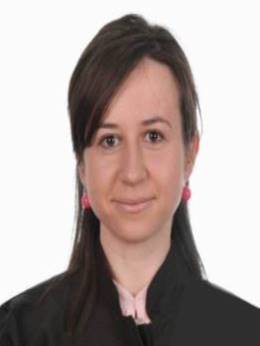
Title: Crime versus suicide in ligature strangulation Two case presentations and literature data
Keynote Speaker
Dr. Bianca Hanganu, Dr. Irina Smaranda Manoilescu, Prof. Beatrice Gabriela Ioan and Dr. Carleta Teodorescu
Grigore T. Popa University of Medicine and Pharmacy of Iasi, Romania
Abstract
Ligature strangulation is produced by compressing the victim's neck with a noose that is progressively tightened by an external force without suspending the victim's body. Ligature strangulation is, in most cases, a homicide. However, suicide by ligature strangulation, although rare, is possible by using a locking mechanism that allows pressure to be maintained on the victim's neck after they lose consciousnessuntil death occurs. Material and methods. The authors present and comparatively analyze two cases of ligature strangulation to highlight the elements that argue for homicide and those that reveal an act of suicide. In the first case, a woman was found dead in a public place with a self-locking plastic ligature around her neck. In the second case, a womanwas discovered in a tree line with five self-locking plastic ligatures(like the one identified in the first case), around her neck.Results. The autopsy revealed in both cases general signs of asphyxiation. In the first case, the ligature was tightly closed at the back of the victim’s neck and the victim showed a single horizontal strangulation mark on the neck.In the second case, the plastic ligatures were tightly closed at the anterior part of the victim’s neck andmultiple strangulation markswere identified on the victim's neck, with petechial hemorrhages on the skin between them. In both cases, hemorrhages were identified in the neck muscles. In neither of the two cases were fighting traces at crime scene and no defense injuries were identified in any of the two victims. In both cases the toxicological examination was negative. Based on investigation data and autopsy findings, in the first case it was determined that the death was the result of a homicide, while in the second case the death was suicidal.Conclusions. Differentiating between homicide and suicide in ligature strangulation is a challenge for the forensic pathologist. The differentiation is possible through the collaboration between all the professionals involved in the investigation of the case by corroborating the aspects revealed by autopsy with those collected from the crime scene and those resulting from the judicial investigation.
Key words:ligature strangulation, homicide, suicide, autopsy, crime scene investigation, judicial investigation
Biography
Prof. Dr. Beatrice Gabriela Ioan is Professor of Legal Medicine and Bioethics at “Grigore T. Popa” University of Medicine and Pharmacy of Iasi, Romania. She also serves as forensic pathologist at the Institute of Legal Medicine of Iași. She graduated from the Faculty of Medicine in 1993, the Faculty of Psychology in 2002 and the Law Faculty in 2012. In 2004 she graduated from the Master Program in Bioethics at Case Western Reserve University, USA. She is a member of the Committee on Bioethics of the Council of Europe and its former Chair and a member of the International Bioethics Committee- UNESCO. Her main interest fields are forensic medicine, medical liability and bioethics. Assist. Prof. Bianca Hanganu is a forensic pathologist, specialist physician, and assistant professor in Forensic medicine at Grigore T Popa University of Medicine and Pharmacy of Iasi. She attended many international scientific meetings where she presented her work and has published papers in the field of forensic medicine, bioethics, and medical communication, her main areas of interest. Dr. Carleta Teodorescu is a forensic pathologist at the Institute of Legal Medicine of Iasi, Romania. She graduated from the Faculty of Medicine in 1992. Her main interest fields are forensic psychiatry and forensic thanatology. Lect. Dr. Irina SmarandaManoilescuis a senior forensic pathologist since 2016 and lecturer in Forensic medicine at Grigore T Popa University of Medicine and Pharmacy of Iasi since 2020. She graduated from Grigore T Popa University of Medicine and Pharmacy in 1998. Since then she attended numerous postgraduate courses in Forensic Medicine, both national and international as well as various scientific conferences. She is author of numerous papers in the forensic medicine field.
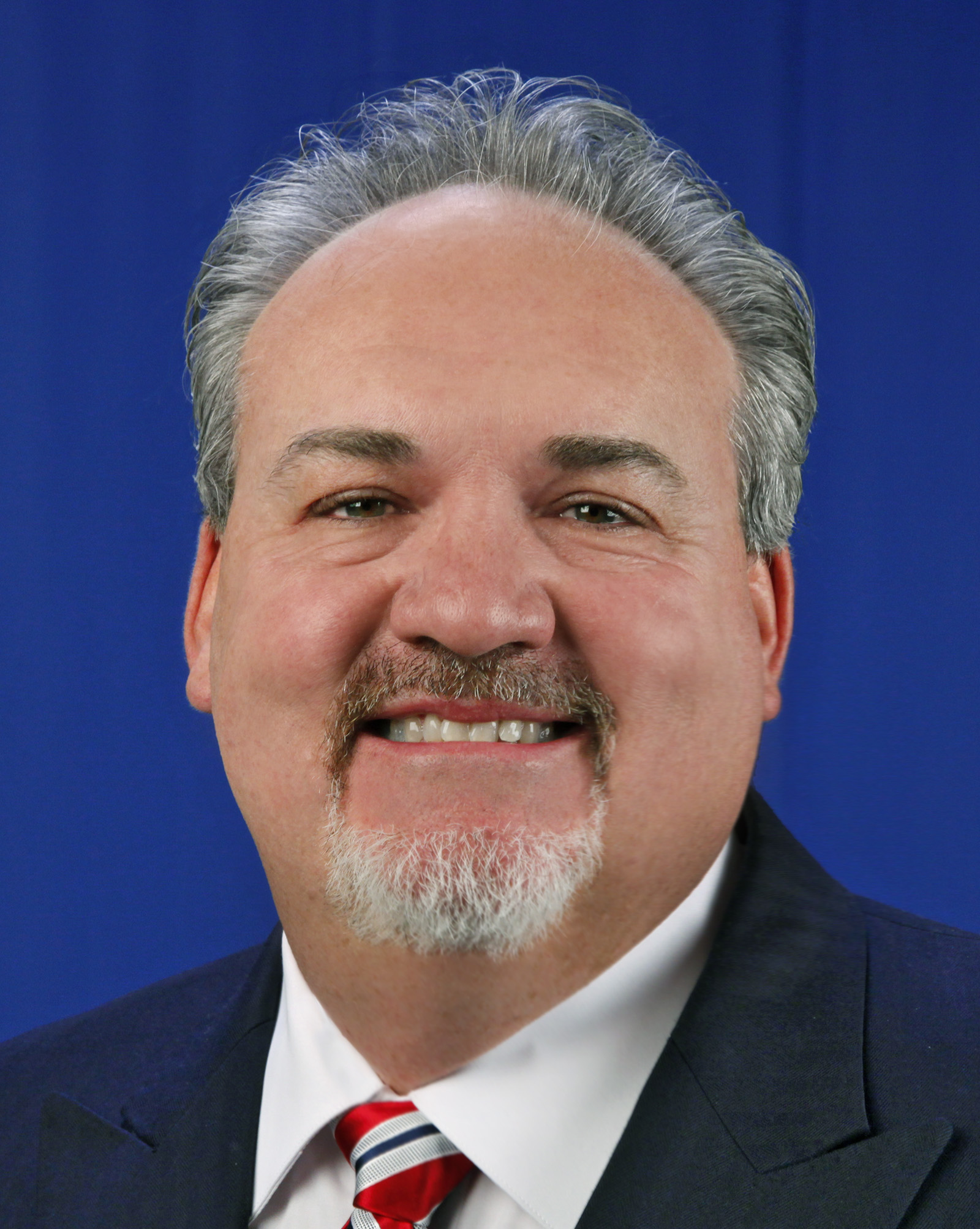
Title: Connecting Practitioners to Quality Education and Training: The Online Opportunities from the Global Forensic and Justice Center
Oral Presentation
Mr. Kevin Lothridge
Global Forensic and Justice Center, United States
Abstract
Forensic science is a fast-moving field. Keeping up with technology and novel applications requires constant focus on education and training. A financial barrier can keep some practitioners from gaining access to this critical information which is essential to moving the field forward. At the Global Forensic and Justice Center (GFJC), science is presented without borders. GFJC is a collaborative approach to forensic science and criminal justice at Florida International University offering training, resources, and educational opportunities that require little more than an internet connection.
Key events like the annual Forensic Science Symposium offer up to 40 hours of continuing education eligible content connecting more than 770 live attendees from 44 countries during the virtual week-long conference. The monthly virtual seminar series explores the practical applications of research and novel approaches to forensic science techniques. Both are offered on the custom GFJC event platform, to watch live or on-demand sessions, making it easy to fit into a professional’s schedule.
GFJC is also home to the first-of-its-kind open-access Research Forensic Library. The unique online resource places the world of forensic science research at your fingertips with a Forensic Librarian as your concierge.
Advancing your career with a Professionals Science Master’s in Forensic Science Management can be done online and on any schedule.
Learn how GFJC is committed to connecting the world through technology for a more globally just society.
Biography
Mr. Lothridge is a well-respected forensic scientist and business leader with more than with 28 years of experience in the international forensic community. His science and technical background, coupled with his business acumen and natural leadership abilities has enabled his rise from drug chemist to laboratory director to executive roles at Florida International University’s preeminent Global Forensic and Justice Center (GFJC). His expertise covers multiple areas of forensic science, including drug and explosive chemistry, fire debris analysis, forensic intelligence and emerging forensic technologies.
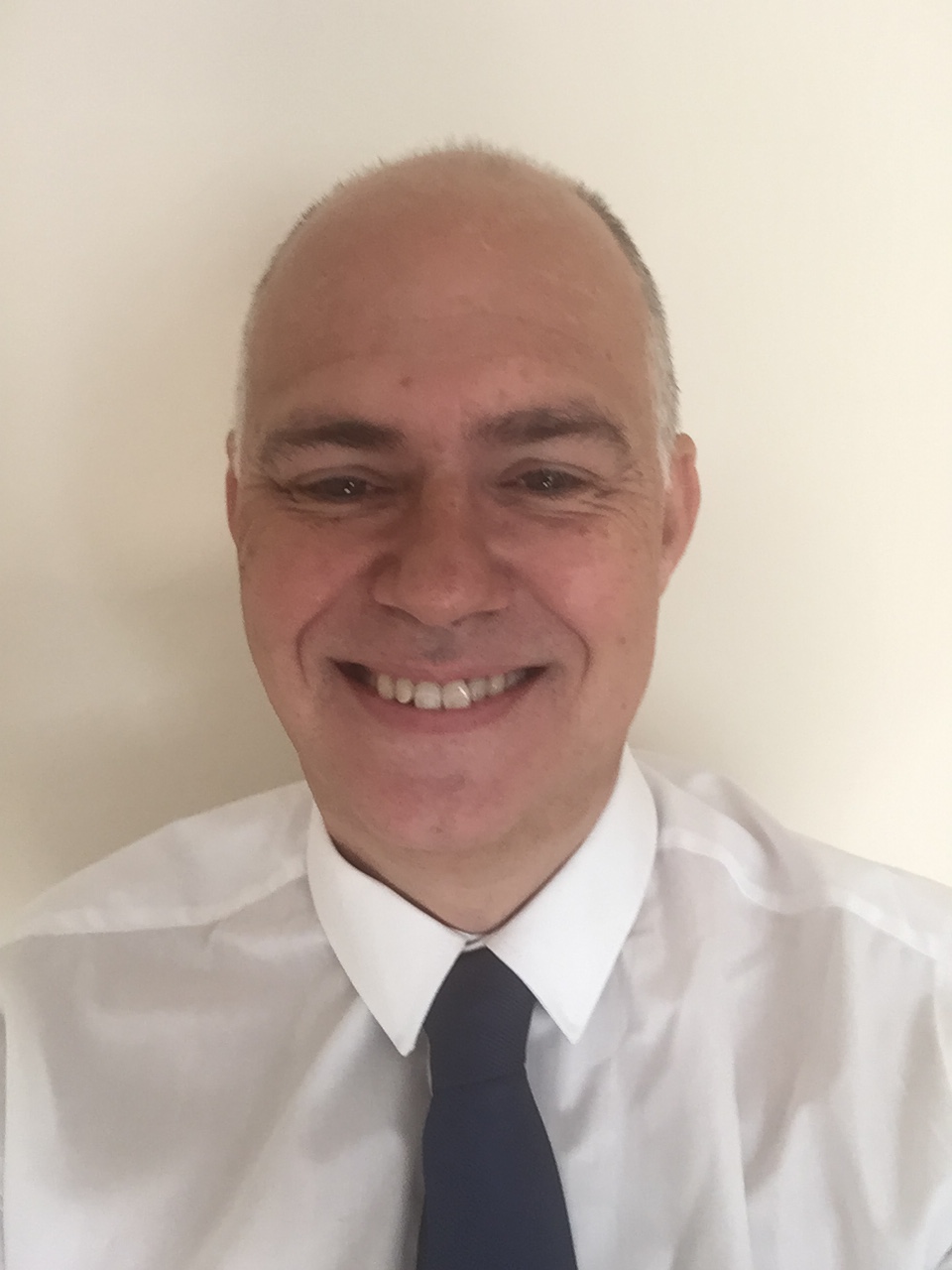
Title: The strategic international operationalisation of forensic capacity and capability to disrupt criminal business model infrastuctures
Oral Presentation
Prof. John Coxhead
Loughborough University, United Kingdom
Abstract
Forensic capacity and capability, in the application of scientfic methods and techniques to the investigation of crime, was established as a retrospective tactical investigatory tool in the late nineteenth century. Given the increasing entreprenuerial sophistication of organised crime businesses, the argument made here is for a new strategic paradigm shift towards proactive forensic disruption, particulary in reducing, or removing, financial anonymity. This could take the case of more target hardening to the international monetary systems or enhanced, consistent and rigourous forensic financial tracking, utilising agreed international protocols. Whilst various crime episodes have been shown to be made more detectable, after the event, through forensic techniques, the proactive use of forensic science to disrupt the criminal ecosystem enabler (cash) is currently underused. The suggestion is to complement existing investigative forensic science with exploratory applications to dominate the financial options that criminal cashflow cvurrently relies upon, and exploits, often with relative impunity. By removing the financial reward of many iterations of organised business crime, individual crime type episodes, and the number of victims, would drastically reduce, thereby reducing the sole reliance upon ex post investigation. Forensic financial safeguards could return saved investment capacity to further develop international protections and safeguards from fraud, laundering and asset acculumulation by offering a new international standard that would both attract and reward consumers, investors and insurers: in transforming criminal profits into legitimate growth potential for forensic science itself, and, moreover, betterment for societal investment.
Biography
John Coxhead is a pracademic having served as a police professional for over 30 years whilst also being engaged in academic research. He holds Professorships at Keele University, Loughborough University,and the University of East London, UK, as Director of the International PIEL Centre which collaborates with researchers in the USA, Canada, Australia, India and the West Indies. He has researched and published both overt and covert materials across a wide range of industrial high impact topics, particulalry serious and organised crime. He has worked for several years in police academic collaborations, to bring academic research closer to operational policing application.

Title: Crime scene lexicology through evidence
Oral Presentation
Dr Daisy Serrano
Forensic Consultant/Instructor, United States
Abstract
The processing and analysis of the crime scene is based on the lexicology of the scene, throughout the evidence located in it, which will become evidence when the investigator relates them to the crime scene that is later, they will become the scientific evidence when appear before the judge on the day of the trial. The structure of the criminal investigation must always be adjusting to new techniques in clarifying the facts. The criminal investigation together with the criminology are the technical and scientific aid of the accusatory criminal system. The lexicology of the crime scene as s standard instrument of scientific evidence arises from the need to process and analyze the evidence located at the scene.
The evolution of knowledge generated by advances in investigative processes has also included forensic sciences in multiple parts of the world. Some of them are tied more to scientific advances and in others to procedural mechanisms that facilitate greater efficiency in investigative functions that result in sustaining evidence with evidence capable of resisting the questions of rigor.That is why it arises from my work and experience in this field what I call the: Lexicology of the crime scene as a standard instrument of scientific proof.
The processing and analysis of the crime scene is based on the lexicology of the scene, through the evidence located in it, which will become evidence when the investigator relates them to the crime scene that will later become scientific evidence when presented to the judge on the day of trial. The structure of the criminal investigation must always be tempered to the new techniques in the clarification of the facts.Criminal investigation together with criminalistics are the technical and scientific assistance of the accusatory criminal system. The lexicology of the crime scene as a standard instrument of scientific evidence arises from the need to process and analyze the physical evidence that the investigator locates and relates it to the place of the facts, applying the postulates of the parents of criminalistics Han Gross and Edmond Locard: "You have to listen to the evidence through the scene because they are our silent witnesses and they are going to explain the history of the crime scene to us." The scene investigator will be the voice of those who cannot speak through the scene.
Biography
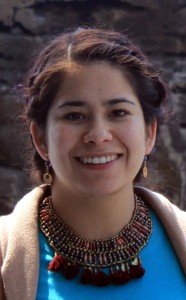
Title: Surviving forensic science lessons before and after COVID-19: an instructors guide
Oral Presentation
Dr. Alexa Villavicencio Queijeiro
UNAM, Mexico
Abstract
The Forensic Science Undergraduate Program (FSUP) at National Autonomous University of Mexico was created in 2013 as a response to the alarming criminal situation in Mexico, as well as to the radical reform of its criminal justice system. It has the mission to educate and train ethical, critical, and humanistic forensic scientists capable of conducting inquiries that meet scientific quality standards and assist the justice system in firmly linking legal rulings to the available evidence. One of the main challenges has been to providr an interdisciplinary, competence-based education to students. To overcome it, teaching and assessment approaches - centered on the achievement of specifically forensic competencies as learning outcomes and the integration of forensic disciplines towards the resolution of simulated cases - have been devised to help develop the professional skill set expected of graduates. The COVID-19 pandemic led to adapting these approaches to distance or hybrid modes of learning, increasing their versatility and enriching the pedagogic repertoire of the FSUP. Currently, the main impact of the program lies in the successful incorporation of some of its graduates to agencies belonging to or related to the criminal justice system, such as the National Prosecutor's Office, the Commission for Truth and Justice for the Ayotzinapa Case, and the National Commission for the Search of Missing and Disappeared Persons, among others.
Biography
Alexa Villavicencio-Queijeiro has a BSc in Basic Biomedical Research and a PhD in Biomedical Sciences from UNAM. She has a Diploma in Science Dissemination and one in Forensic Science Teaching. She has been working as a full-time Associate Professor at the Forensic genetics lab of FSUP,UNAM in Mexico since 2014. She has published 16 papers in reputed journals, 8 book chapters and one book.

Title: DNA QUANTIFICATION OF FORENSIC SAMPLES : VALIDATION STUDY OF THE INVESTIGATOR QUANTIPLEX PRO RGQ KIT (QIAGEN) USING HALF REACTION VOLUMES
Plenary Speaker
Dr. ANNA BARBARO
President, Worldwide Association of Women Forensic Experts (WAWFE), Italy
Abstract
DNA quantification of forensic samples is of great importance for proper DNA amplification and STR profiling. Several methods have been developed during years to quantify DNA, from basic UV spectrometry, through gel-based techniques, to dye staining, blotting techniques, and, Real time amplification methods. The Investigator Quantiplex ProRGQ kit (Qiagen) allows in around 1 hour the quantification of total human DNA and male DNA and it provides information about DNA degradation status, inhibitors presence and possible mixture condition. In the present study, we evaluated the kit performance on a wide range of real casework samples (i.e. biological stains, contact traces, human remains), using half reaction volumes. Quantification data, Inhibition Index (IC), Degradation Index (DI), Mixture Index (MI) were evaluated using the software Q-Rex (Qiagen) together with the Quant Assay Data Handling Tool In all cases, we observed a full concordance between data obtained using standard reaction volumes and half volumes. As expected, differences in DNA quantity and quality were found, due to the samples nature and to their different ability to preserve and release DNA. This study confirmed the Investigator Quantiplex Pro RGQ Kit provides accurate and precise assessment of DNA quantity and quality in forensic samples, even using half reaction volumes.
Biography
Anna Barbaro has completed her European PhD in Forensic Genetics (PhD) at University of Santiago de Compostela (Spain). She got a Diploma at the School of Specialization in Applied Genetics and a Master Diploma in Psychological and Behavioral Techniques of the Criminal Investigation at the University of Rome La Sapienza (Italy). She has published more than 150 papers, including conference presentation, she is Author of 3 technical Manuals and of some chapters in other books. She serves as President of the Worldwide Association of Women Forensic Experts, she is honor member of some scientific associations, she serves as reviewer for several international scientific journals and she is Member of the Editorial Committee of some international scientific journals. Invited speaker at various national and international conferences, organizer of courses and conferences about Forensic Sciences, member of the Scientific Committee of several courses and conferences.

Title: Luminescent nanomaterials for fingermarks detection in forensic science
Oral Presentation
Prof. Anees Ahmad
King Saud University, Saudi Arabia
Abstract
Luminescent nanomaterials have been successfully applied in forensic science to detect the fingermarks on various kind substrates. Among them luminescent Ln3+NPs/ upconversion nanoparticles(UCNPs) produce more contrast, high visible, highly sensitive, selective, long-life decay imaging pictures of latent fingerprints(LFPs) on different substrates (porous and non-porous) with minimized toxicity, which is lacking in most of the traditional fluorescent nanomaterials. Here we will discuss the systematic overview of current trends on latent fingerprints imaging development in forensic sciences. The benefits and experimental results conducted by the researchers on various kinds of metal, metal oxides, plasmonic NPs, fluorescent NPs (conjugated polymer NPs, quantum dots, nonmetallic NPs, mesoporous silica NPs, and lanthanide (Ln3+) NPs, etc.) for the expansion of LFPs images on dissimilar surfaces. Despite the use of NPs in forensic sciences for the detection of LFPs pictures, the main emphasis is on luminescent Ln3+-NPs/ UCNPs. But due to the current demand, more studies are required to develop the most efficient, high-performance, surface-functionalized, highly biocompatible, and nontoxic Ln3+ NPs/ UCNPs for the recognition of latent fingerprints images on different surfaces.
Keywords:
Fingermarks, forensic, luminescent, lanthanides, upconversion
Biography
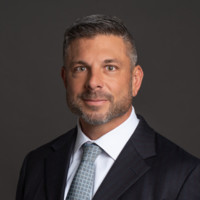
Title: Electronic Evidence collection, Digital Forensics Analysis in the evolving landscape of electronically stored information as applied to investigations
Oral Presentation
Mr. Robert C DeCicco
Alvarez and Marsal, United States
Abstract
An overview of the basics of Digital forensics is a branch of forensic science focused on recovery and investigation of artifacts found on digital devices. Any devices that store data (e.g. hard drives, smartphones, thumb drives, memory cards, cloud storage, drones, ephemeral messaging) are within the ambit of digital forensics. Given the proliferation of digital devices and storage of ESI, there has been a perpetual increase in the use of, necessity and application of digital forensics in legal cases and investigations. We will discuss the methodologies and how to present evidence for legal professionals and non forensics professionals to understand the neccessity and interpretation.
Biography
Robert DeCicco is a Managing Director in Alvarez & Marsal’s DFIR practice and specializes in providing services related to digital forensics examinations for a variety of high-profile and confidential clients for over 25 years. DeCicco is a former NSA employee in Information Assurance and regularly works in conjunction with regulatory and law enforcement agencies on large scale in depth investigations. He is a court accepted expert in the fields of digital forensics, data analytics, electronic discovery, computer programming, information security and electronic evidence. He has provided expert reports, rebuttals and defended his opinions related to computer forensics and electronic discovery in both civil and criminal matters and in state, district and federal courts throughout the US and abroad.
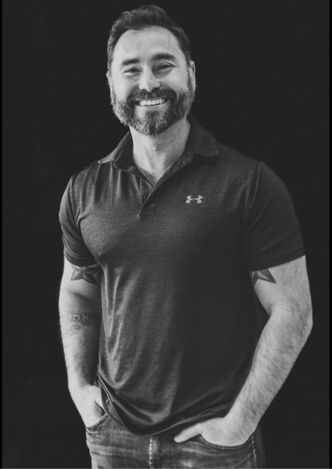
Title: Cyber Ransomware Negotiation
Oral Presentation
Ricoh Danielson
United States
Abstract
Cyber Ransomware is an ever going part of Cyber security.Cyber Incident Response and Digital Forensics are the tip of the spear for cyber Ransomware. We are only as good as we were in the last cyber incident, so that means we need to forge forward with the cyber security principles as a basis for fundamentals that will allow us to combat cyber threats.
Biography
Ricoh Danielson has elaborative experience in handling Cyber Incident Response, Cyber Security, Information Security, Privacy and Compliance. Ricohhelpedmajor retail, Financial and Health Care organizations mitigate threats and risks. Ricoh is a Digital Forensics Expert for Criminal and Civil Cases. Ricoh has handled cyber incidents for major world-renowned Healthcare, Financial and Retail firms. Ricoh is a graduate of Thomas Jefferson School of Law, a graduate of UCLA, a graduate of Arizona, and a US Army Combat Veteran.

Title: Forensic Search on land & underwater
Oral Presentation
Mr. Peter Faulding
Specialist Group International Ltd, United Kingdom
Abstract
Peter is a leading forensic search specialist and has worked on many high-profile missing person cases and has located human remains and evidence on land and underwater that have gone undetected for years. In June 2007 Peter Faulding was called in by Lothian & Borders police (Operation Mahogany) to plan and conduct a full geophysical and forensic search of serial killer Peter Tobin’s former home in Bathgate, Scotland. The intention was to search for the remains of Vicky Hamilton who disappeared in 1991. The extensive search lasted over a week. While carrying out a detailed search of the loft, found a dagger was found concealed in the rafters. Following forensic examination, it was found to contain the DNA of Vicky Hamilton. This was the final piece of the jigsaw that the police needed to link Peter Tobin to the murders of Vicky Hamilton and Dinah McNicol who both went missing in 1991. Tobin was sentenced to life for their murders.
Biography
Peter Faulding is the founder & CEO of Specialist Group International (SGI), a world renowned company specialising in forensic search on land and underwater. Peter is a leading forensic search specialist and has worked on hundreds of cases, locating and recovering vital evidence and human remains in the remotest of places. Peter will give a photographic insight to many of the murder and missing cases he has worked on, including serial killer Peter Tobin.

Title: The Best Biometric Is More Than One
Oral Presentation
Mr. Vincent I. Perez
VIP Forensics, United States
Abstract
AbsoluteID Biometric Gathering System creates a structure of simple, mobile, safe collection to ensure an accurate identification. Vincent I. Perez, JD enhanced the patented EasyGather DNA/Touch DNA collection device and linked the device to a proprietary smartphone app. The user can collect DNA/Touch DNA, as well as GPS data, photos, facial recognition, iris scan, and fingerprint images, all stored in a secure AWS cloud. On location, one device, providing real-time collection plus later DNA analysis to assure accurate identification. The location/identification element provides a solution for Mass Casualty Incident resource allocation.
Biography
Vincent I. Perez, JD is a former police officer and attorney. Former General Counsel of a DNA laboratory, his products are curated from his experience as a police officer, crime scene training, courtroom trials, plus from his training attended and conducted. Products are developed for better identification for law enforcement, National Security, and Mass Casualty Incidents. Mr. Perez was a police officer for 10 years, and graduated from The George Mason Scalia School of Law in Arlington, VA.
+91 9491 456 452
Door No.200, Immidhihalli Main Road, Whitefield-560066, Bangalore, India
About Us
Global Scientific Guild organizes conferences and webinars to promote quality research and real world impact in an atmosphere of true international co-operation between scientists, doctors, professors, practitioners, engineers and industry by bringing together the world class renowned personalities to discuss the latest developments and innovations at one common platform.